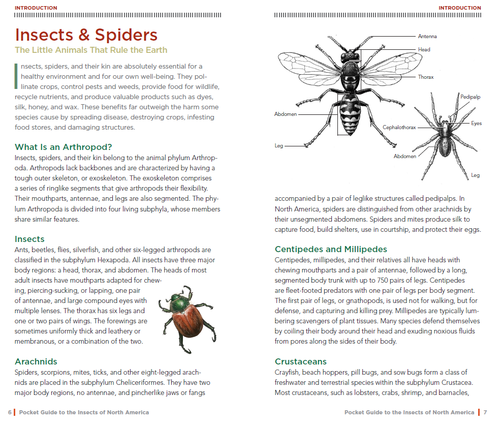Guest blogger Mary Jo Courchesne shares the ins and outs of negotiation when getting your art into a publication.

Artist Michelle Hunter gained exposure for her artwork on the cover of this publication produced by the Royal Society of Biological Sciences.
You’ve promoted your work on your website, in social media, and on various vendor outlets like Etsy, Shutterstock, Art.com and more. Now you’ve been approached by a publisher (or have had a submission accepted after pursuing a call for work). You have an offer of publication in a forthcoming book or magazine.
First, congratulations! As you know from working to gain new clients, getting attention for your art can be a major hurdle. But what do you do with the offer in front of you? What should you be seeking for terms or agreeing to?
Before agreeing to any publication offer, you should have some idea in mind with regard to the terms and conditions you are willing to accept. Do you want to maintain copyright in your work? If so, are you willing to assign control of your work for at least some formats or versions that would turn your work into an asset that publishers will want to utilize? What type of audience do you want your work to be exposed to? Are there any places, formats or venues you do not want to have your work published in? Decide ahead of time which of these items you are firm on and which you may be willing to negotiate with. This will make your discussions with a publisher proceed more smoothly.
Next—and perhaps one of the most important items to have ready—is proper permission for your work. Generally, when you create an original work from scratch, you will own all rights to the work from the moment you set it in a fixed format. (Note that you do not have to register copyright with the US Copyright office to control copyright in your work).
However, you may be adapting your work from that of another artist, photographer or writer (especially something that is well-known or is in pop culture). In that case, you need to be absolutely certain that you have permissions and that they are in writing. A claim of fair use in the creation of your work will not pass muster with publishers, so it’s best to be prepared.
Most publishers will ask for a copy of your permissions prior to acceptance for publication. Alternatively, they may ask you to waive any liability toward them for any potential infringement.

Reprinted with permission of National Geographic Partners, LLC from National Geographic Pocket Guide to Insects of North America by Arthur V. Evans. Copyright © 2016 National Geographic Society
Now, review your terms. Likely, you will be offered a flat fee or a one-time payment for your work, even if the work was commissioned. Offers may vary. There is a possibility of a royalty payment, which is rather rare for art incorporated into a publication.
The amount offered may seem small and feel like a slight. But, look deeper and consider the target audience for the publication. Are those readers people that you might not normally reach? If so, think of this publication as a way to reach out to those who otherwise wouldn’t see your art. There’s value in that publicity, even if it is not monetarily represented in the offer in front of you. Just be certain that the credit line or other information about the art will lead these people to you in a way that’s most direct.
When you review the contract or permission letter that you are provided from the publisher, be certain you understand the terms. If you do not, you should certainly enlist the help of a professional. For example, does the publisher seek an exclusive use of the image or the work in specific formats (print, digital, multimedia)? Is this usage just for this edition, or are they seeking a full transfer of copyright via a work-for-hire agreement?
The transfer of copyright or work-for-hire usually means that the publisher will control the rights in and to the work as if they were the creator. This may seem a little odd, but it can prove beneficial to you especially if you are attempting to make a bigger name for yourself. Note that a work-for-hire agreement or copyright transfer does not necessarily mean that you will not receive credit for your work as the artist. Most publishers will be willing to provide a credit line back to the artist even if they ask for the copyright transfer.
The key to considering any of the terms presented in the offer is to understand the audience that is ultimately targeted, as well as the publication itself. Is the publication in print only, or does it have an online presence? Does the publication have national or international recognition? Is it specific in a valuable way? The publication type, distribution and formats will inform what the publisher is ultimately going to be seeking from you in rights. In some cases, these terms may not be negotiable. It’s helpful to know as much as you can about the publication when talking to the publisher.
If, after your analysis of the offer and the terms, you still do not feel comfortable, you certainly do not have to accept an offer as it stands. Go back to the publisher with the terms you feel are most reasonable. Should the publisher not accept those terms, or if in the end, you can’t come to terms that you feel maintain your best interests, then you certainly should not be afraid to decline the offer.
Working with publishers does not need to be a tortuous experience. As long as you bear in mind how your perceived value of the publication weighs along with the offer in hand, you will best be able to consider whether the offer is an acceptable one to you and make an informed decision.
Good luck!
 Mary Jo Courchesne is the owner and president of Gryphon Publishing Consulting, LLC . She has more than 20 years of experience in book publishing, with more than 15 years of that time specializing in subsidiary rights and permissions. For the last ten years she has also served as Adjunct Professor in The George Washington University’s Masters in Publishing program where she instructs students about copyright and permissions in a course entitled Editorial Content, Rights and Permissions. She is an active member of the Independent Book Publishers Association, the American Society of Picture Professionals, the Society of Children’s Books Writers and Illustrators, and Washington Publishers.
Mary Jo Courchesne is the owner and president of Gryphon Publishing Consulting, LLC . She has more than 20 years of experience in book publishing, with more than 15 years of that time specializing in subsidiary rights and permissions. For the last ten years she has also served as Adjunct Professor in The George Washington University’s Masters in Publishing program where she instructs students about copyright and permissions in a course entitled Editorial Content, Rights and Permissions. She is an active member of the Independent Book Publishers Association, the American Society of Picture Professionals, the Society of Children’s Books Writers and Illustrators, and Washington Publishers.
Learn more about artist Michelle Hunter by visiting her website.


Speak Your Mind